Small pitch led screen how to reduce moire effect
Small pitch led screen how to reduce moire effect
When using a digital device (mobile phone, camera, camera, etc.) to shoot the small pitch led screen LED display screen, there will be some irregular water ripple patterns on the image. This phenomenon is called moiré phenomenon, and the moiré is called water ripple. . As shown below:
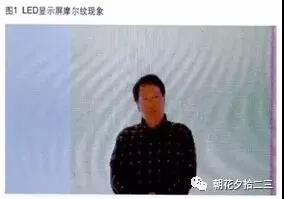
Image source network
Another phenomenon that is often seen when digital devices are shot is the scanning pattern. Because it is often confused with the Moore pattern by the industry, it is necessary to mention it here.
The scanning pattern of the narrow pitch led screen is caused by the low refresh rate of the display (<1000Hz), which is caused by the camera shutter capturing the scanning line (because the LED display is driven by progressive scanning), and the scanning pattern is horizontal. Black stripes, which are different from the irregular features of moiré, as shown below:

Eliminating the scanning pattern only needs to increase the refresh rate of the LED display screen, and the method of eliminating the moiré pattern is relatively complicated because the cause of the moiré pattern is not absolutely related to the performance of the fine pitch LED screen.
The principle of moiré generation is described by words alone. For most people, it will be difficult to understand. Below we refer to the CCTV Gao Gong Li Xiaobin's "Fire Control Method for LED Display Moiré", combined with the icon Explanation:
Let's first understand the image sensor (CCD) of a digital camera or camera.
The image sensor CCD has a plurality of neatly arranged photosensitive materials (photodiodes), which can sense light and convert the optical signals into electrical signals, and then convert them into digital image signals through external sampling amplification and analog-to-digital conversion circuits. Baidu Encyclopedia ~~). These neatly arranged photosensitive materials, also known as CCD pixels, are like LEDs on the narrow pixel LED display.
Therefore, we can use two images to represent the pixel array on the CCD and the array of lamps on the LED display (the gap between the pixels and the pixels is grid-like).
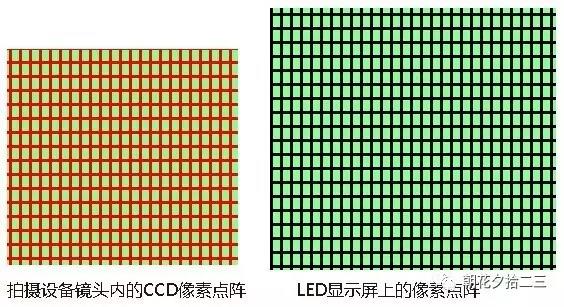
When the shooting lens is aimed at the LED display, simulate with the above two pixel bitmaps, let's look at the effect of the imaging (the lens rotates at an angle):
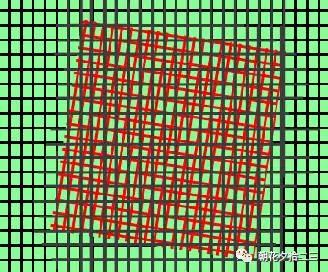
If you can't easily see the moiré, let's fade the image a bit:
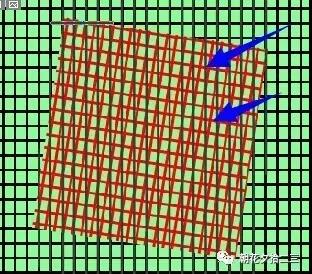
Is it possible to clearly see the moiré!
This is the principle of moiré generation. It is explained in a general and image manner. When two grids of lattices coincide, the light and dark parts of the grid overlap each other to produce a striate phenomenon (you can carefully observe the above figure). The difference in features between the light and dark positions of the stripes after the two grids are overlapped).
Probably understand the principle, how to eliminate moiré?
Let's look at an optical term - spatial frequency.
The spatial frequency is the number of cycles in which the bright and dark stripes of the image appear repeatedly in a unit of view. Let's use another picture to illustrate:
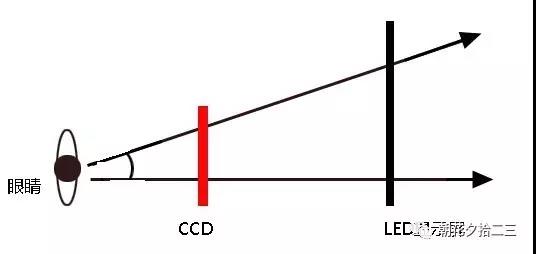
In the figure, the distance between the camera and the LED display is fixed. In this angle of view of the eye, if the number of photosensitive elements arranged neatly on the CCD is the same as the number of pixels arranged neatly (with a grid arrangement) on the LED display, then We can say that the spatial frequency of the CCD pixel is the same as the spatial frequency of the LED display (the same number of rasters). Similar spatial frequencies are most likely to produce moiré.
Therefore, the current methods for eliminating moiré in the industry generally have the following types:
1. Change the camera angle. Since the angle at which the camera captures an object causes a moiré, slightly changing the angle of the camera, by rotating the camera, any moiré present can be eliminated or changed.
2. Change the camera position. The moiré can also be reduced by changing the angular relationship by moving left and right or up and down.
3. Change the focus. Too sharp focus and high detail (bumping grids) can cause moiré, and a slight change in focus can reduce clarity and help eliminate moiré.
4. Change the lens focal length. Different lens or focal length settings can be used to change or eliminate moiré.
5. Use the pre-mirror filter directly on the front of the CCD to make the exposure conditions meet the spatial frequency, thoroughly filter the high spatial frequency part of the image, and reduce the chance of the LED display moiré.
6. An optical processing screen is installed in front of the small pitch led screen. The optical screen is made of special materials, which can diversify and display the light of each LED (pixel) scattered by the LED display screen to eliminate the graininess of the screen and the pixel grid effect. That is, the generation condition (grid) of the moiré is eliminated.


